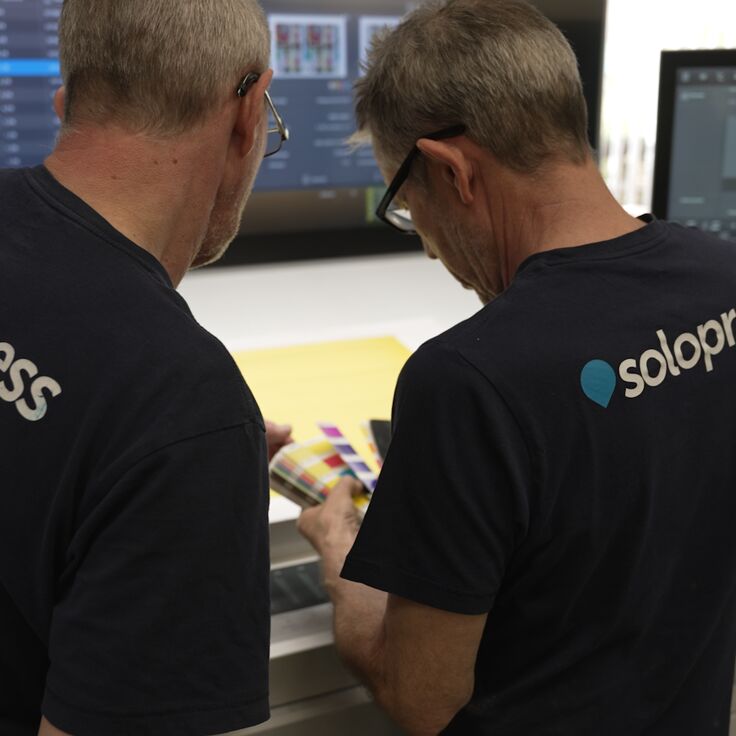High volumes of short-run production jobs characterize a lot of the online print workflows. To safeguard margins, orders must be able to flow uninterrupted from order placement to production. Error detection and correction must be swift in order to be able to meet production deadlines.
Online print
Integrated quality control
While typically as many PDF files as possible are accepted and printed, often you still need minimal quality control on incoming files. In a web-to-print portal for example, you might need to at least warn the customer that fonts are not embedded, or image quality is going to be insufficient. And you might need to check the PDF files uploaded by the customer to the order placed. Does the final trim size and the number of pages in the PDF correspond to the product ordered by the customer for example?
pdfToolbox contains a class preflight engine that can answer many of these basic questions very quickly, and in scenarios where time is really critical a QuickCheck engine can prove to be even faster, even on very large PDF files.


On platform processing
The fact that pdfToolbox is available in a command-line and SDK version that run on macOS, Windows and most Linux flavors, means that it can be installed directly on the web server, or on a server in the same cloud environment. This makes integration easy and processing of jobs extremely fast.
Add to that the existence of callas License Server, which pdfToolbox can cooperate with, and you have a product that is ready for auto-scaling cloud platforms and can be flexibly configured to optimize investment versus processing speed and scale.
Production file preparation
Given the high volume and need for low processing times, using all pdfToolbox functionality such as color standardization, scaling, merging and splitting, redistilling or rasterization of problem files, imposition… makes for a one-stop solution to convert the incoming customer file to a fully production-ready PDF file.
pdfToolbox can also ‘decorate’ PDF files with additional marks, job ID, barcodes (such as QR codes, EAN, data matrices or more than 100 other types of barcode) in order to facilitate down-stream processes such as cutting, reassembly of the whole order and tracking of jobs throughout the workflow.



